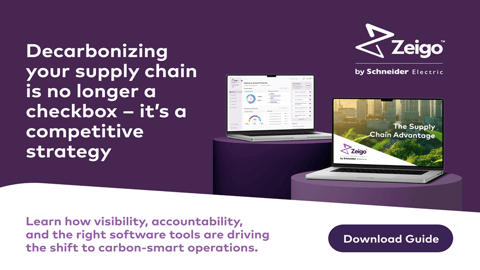Supply Chain Resiliency Remains Elusive for 95% of Companies, Says Gartner
A core area of supply chain transformation for consumer goods companies is resiliency. Tom Madrecki, VP of supply chain at the Consumer Brands Association, even noted it in a recent CGT webinar, stating that CG companies are making strategic investments to achieve resiliency and "ensure the availability and affordability of products that are able to meet retailers demands.”
How successful are companies across multiple industries as they look to achieve this goal? According to new Gartner, Inc. research, despite the efforts, most companies (95%) will remain locked in an outdated model that will prevent them from achieving end-to-end supply chain resiliency by 2026.
A foundational challenge comes from companies focusing on the wrong action items, looking to increase decision speed or digitize their supply chains rather than achieving true resiliency. There’s a paradigm shift that needs to happen, says Gartner, with companies needing to move away from focusing on accuracy and forecast-driven results, to instead zeroing in on managing uncertainty.
By focusing on the wrong areas, says Gartner’s Tim Payne, VP analyst within the research company’s supply chain practice, companies ironically take actions that can lead to more fragile and rigid supply chains in their scramble to add resiliency.
This leads to outdated models, he says, adding that “a current focus on ever improving accuracy results in supply chains unable to cope with today’s uncertainties and simply reinforces their vulnerabilities.”
So how can consumer goods companies achieve resiliency and avoid these mistakes? Gartner shares the following tips:
- “Drop forecasting-based models and enable the company’s supply chain to take full advantage of its uncertainty mitigation tactics by not constantly propagating its demand signal through the supply chain. Change the planning focus onto uncertainty rather than exclusively on the plans’ accuracy.
- Drive from unknown uncertainty toward known variability by utilizing AI and ML for different, multiple predictions.
- Begin to build a digital supply chain twin (DSCT) by identifying key model parameters that would help to improve the resiliency of decisions.
- Assess supply chain decisions using uncertainty metrics rather than accuracy metrics, by deploying KPIs that describe the supply chain’s capability to tolerate uncertainty and the “probability of execution” of relevant supply chain decisions.”
Overall, the problem stems from an environment in which technologies are remarketed to address resilience, while they lack the true flexibility and adaptability companies need, says Gartner.
- Learn How CG Companies Are Prioritizing Resiliency
Procter & Gamble is focusing on a Supply Chain 3.0 strategy to remain at a level of productivity while continuing to invest in innovation and drive market growth. P&G chief financial officer Andre Schulten said automation is the big opportunity and will not only provide significant cost reductions, but drive supply chain resiliency. Read more.
CGT discussed the topic at length, looking at examples from Kraft Heinz and Instacart, during a webinar titled “3 Ways to Build Resilience in Your Supply Chain with Data.” We talked with industry experts from Snowflake and Slalom to explore how leading brands can enhance their visibility in order to score long-term wins and thrive regardless of what the future holds. Read the transcript.
Dig into the insights from Madrecki and other industry experts and leaders in this feature that uncovers the winning approaches CG executives are implementing to get ahead with their supply chain strategies. Read more.






